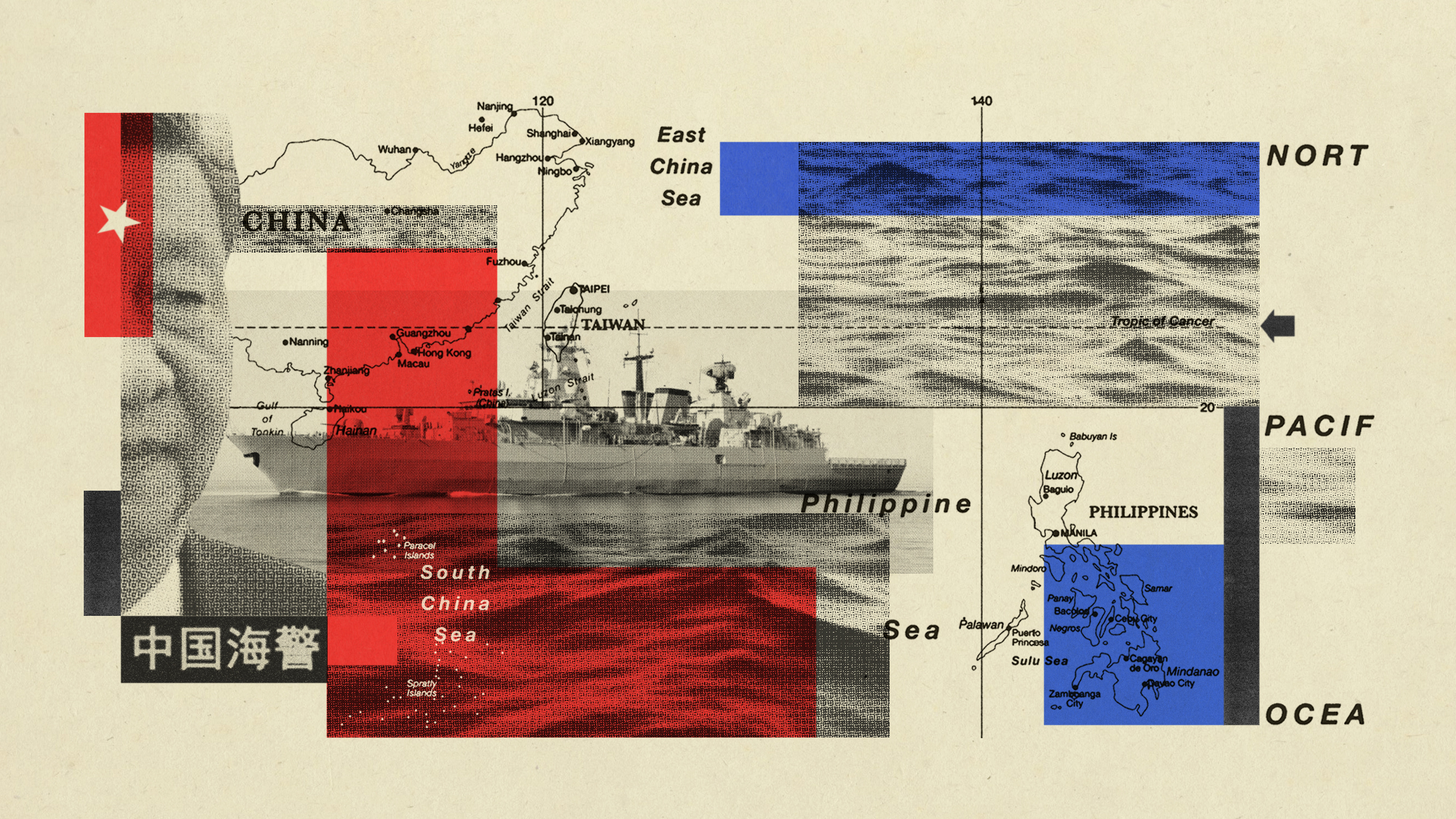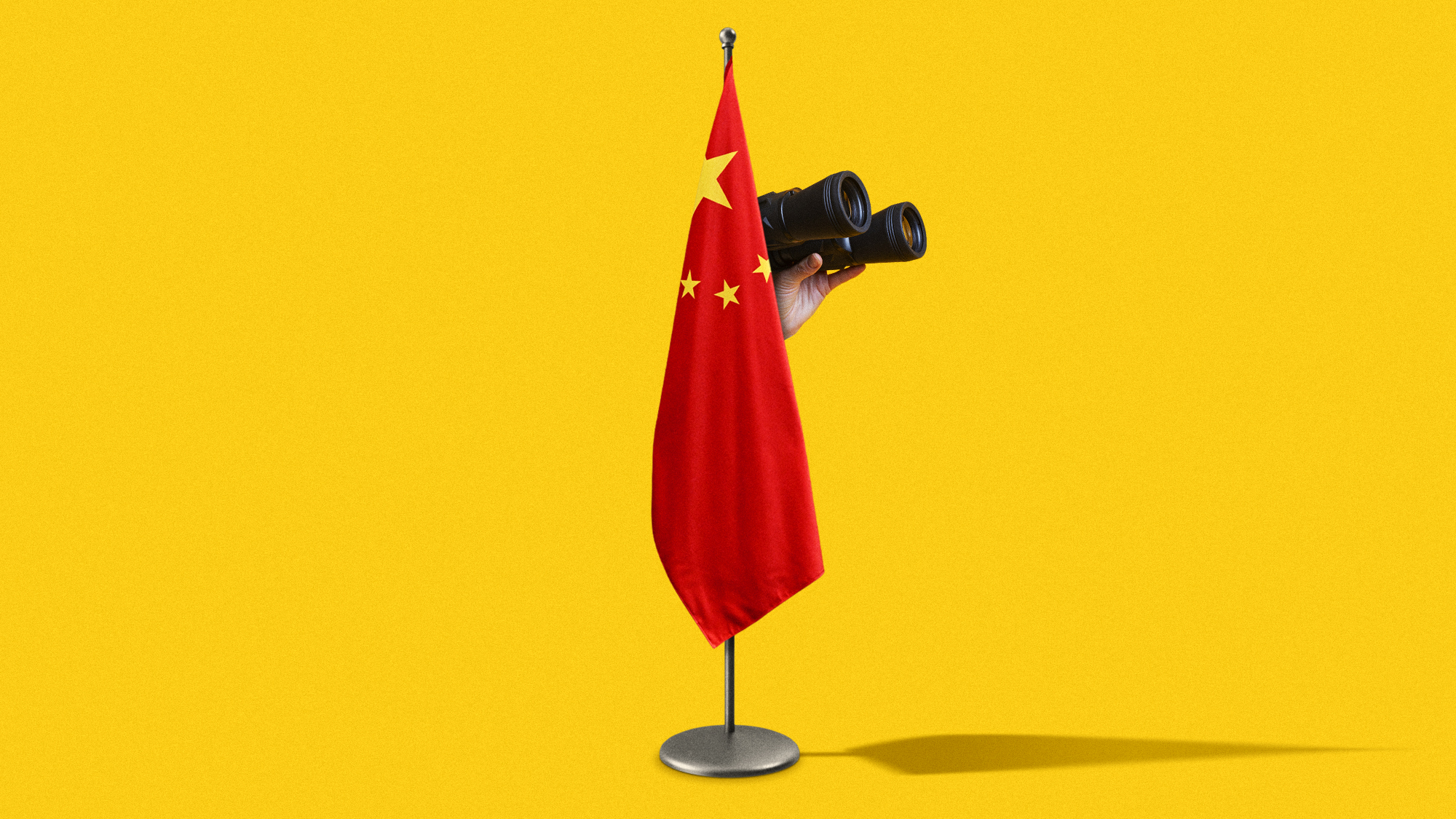Could World War III start in the Philippines?
Clashes bring U.S., China closer to conflict


Tensions are rising in the South China Sea again. Recent videos from the Philippine military showed "Chinese Coast Guard personnel ramming and boarding Philippine naval boats and confiscating their weapons," said Deutsche Welle. It's the latest in a series of frequent clashes between the two countries that observers worry could eventually spark a larger conflict involving the United States. "The risk of an accident that escalates to conflict is high," said Bonnie Glaser of the German Marshall Fund of the United States.
There's a risk that China and the United States — which has a mutual defense treaty with the Philippines — are "sleepwalking toward World War III" in the region, the Global Policy Institute's Bob Savic said in the Asia Times. China recently announced it would arrest foreign nationals in disputed waters it claims as its own; Philippine President Ferdinand Marcos Jr., meanwhile, has said he would treat the death of any of his countrymen in the encounters as an "act of war." It's easy to see how things could get out of hand, even with diplomats on both sides working to prevent escalation. "A peaceful outcome should not be taken for granted."
What did the commentators say?
"The odds of armed conflict in the South China Sea are high and rising," Derek Grossman said at Foreign Policy. China's increasingly aggressive actions have put the "Philippines in an ever-tightening stranglehold that is increasingly compromising the latter's sovereignty and territorial integrity at sea." However, neither the Philippines nor the United States seems sure how to respond. One possibility is treating "gray zone" attacks on Filipino ships — involving water cannons, lasers and boat-ramming but no weaponry — as "armed attacks" that would bring direct American intervention. The point is not to start a war but to "reestablish deterrence and lessen the risk of war in the years to come."
The Week
Escape your echo chamber. Get the facts behind the news, plus analysis from multiple perspectives.

Sign up for The Week's Free Newsletters
From our morning news briefing to a weekly Good News Newsletter, get the best of The Week delivered directly to your inbox.
From our morning news briefing to a weekly Good News Newsletter, get the best of The Week delivered directly to your inbox.
"The U.S. and the Philippines need to further adapt their century-old alliance to meet current threats," Richard Heydarian said at Nikkei Asia. American leaders might consider "having U.S. drones or navy frigates shadow Philippine supply convoys" to signal their commitment "without getting directly involved." The U.S. could also furnish some of its own decommissioned craft to the Philippines to boost that country's capabilities. Bottom line: "The U.S. must back up its own lofty rhetoric in support of Manila with concrete support for its besieged treaty ally."
What next?
"We are not in the business to instigate wars," Marcos said after the most recent incident, according to The Associated Press. But he added that his country would not back down from "any foreign power." The United States has also reaffirmed its support of the Philippines, asserting that China's "dangerous actions threatened regional peace and stability," said NBC News.
One bright sign? "Washington and Beijing are talking more regularly to avoid a conflict in the South China Sea," said the BBC. Observers seem to agree on two things: The rising tensions could get out of hand — and nobody actually wants that. "Our militaries are operating in very close proximity to one another in the South China Sea and in the Taiwan Strait," said Nicholas Burns, the American ambassador to China. "You don't want to send the wrong signal."
A free daily email with the biggest news stories of the day – and the best features from TheWeek.com
Joel Mathis is a writer with 30 years of newspaper and online journalism experience. His work also regularly appears in National Geographic and The Kansas City Star. His awards include best online commentary at the Online News Association and (twice) at the City and Regional Magazine Association.
-
 Can Mike Johnson keep his job?
Can Mike Johnson keep his job?Today's Big Question GOP women come after the House leader
-
 A postapocalyptic trip to Sin City, a peek inside Taylor Swift’s “Eras” tour, and an explicit hockey romance in December TV
A postapocalyptic trip to Sin City, a peek inside Taylor Swift’s “Eras” tour, and an explicit hockey romance in December TVthe week recommends This month’s new television releases include ‘Fallout,’ ‘Taylor Swift: The End Of An Era’ and ‘Heated Rivalry’
-
 ‘These accounts clearly are designed as a capitalist alternative’
‘These accounts clearly are designed as a capitalist alternative’Instant Opinion Opinion, comment and editorials of the day
-
 Can Mike Johnson keep his job?
Can Mike Johnson keep his job?Today's Big Question GOP women come after the House leader
-
 Will Netanyahu get a pardon?
Will Netanyahu get a pardon?Today's Big Question Opponents say yes, if he steps down
-
 Are the US boat strikes a war crime?
Are the US boat strikes a war crime?Today’s Big Question Hegseth is defiant after Venezuela reports
-
 Looming drone ban has farmers and farm-state Republicans anxious
Looming drone ban has farmers and farm-state Republicans anxiousIN THE SPOTLIGHT As congressional China-hawks work to limit commercial drone sales from Beijing, a growing number of conservative lawmakers are sounding an agricultural alarm
-
 Are Republicans going to do a deal on health care?
Are Republicans going to do a deal on health care?Today's Big Question Obamacare subsidies are expiring soon
-
 Pentagon targets Kelly over ‘illegal orders’ video
Pentagon targets Kelly over ‘illegal orders’ videoSpeed Read The Pentagon threatened to recall Kelly to active duty
-
 Who are China’s Westminster spies?
Who are China’s Westminster spies?The Explainer MI5 warns of civilian ‘headhunters’ trying to ‘cultivate’ close contacts of MPs and peers
-
 Will Chuck Schumer keep his job?
Will Chuck Schumer keep his job?Today's Big Question Democrats are discontented and pointing a finger at the Senate leader
